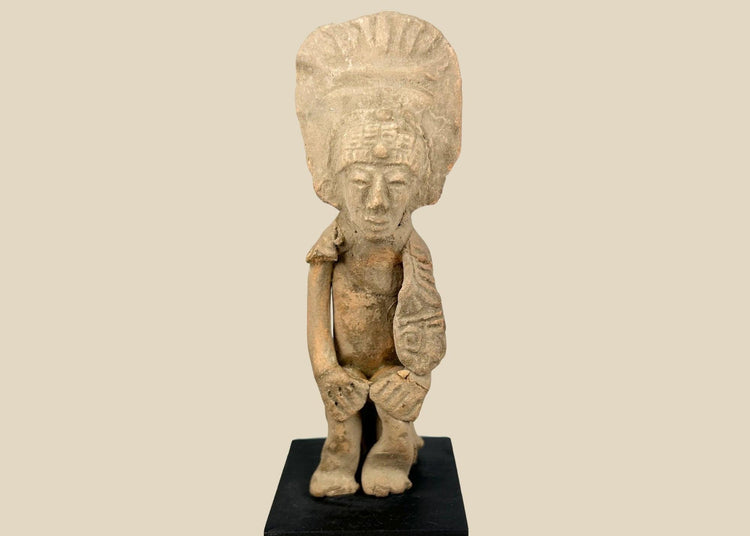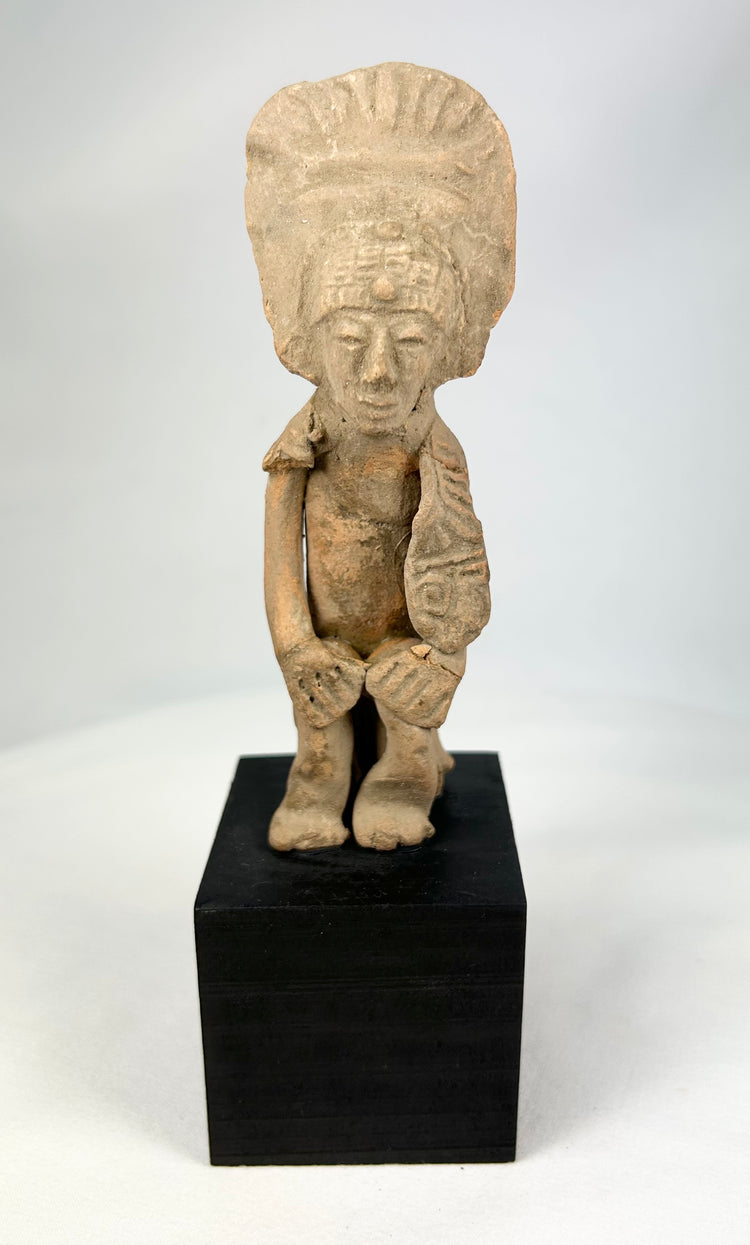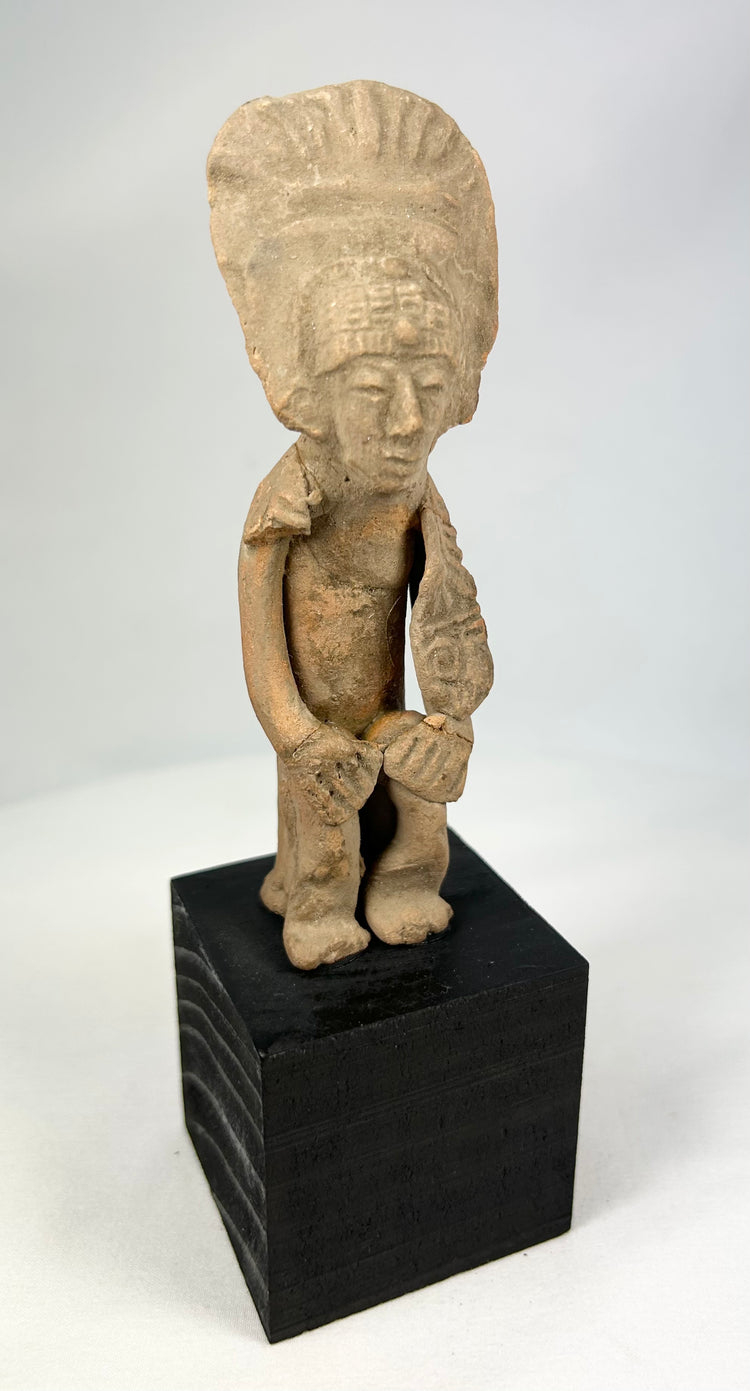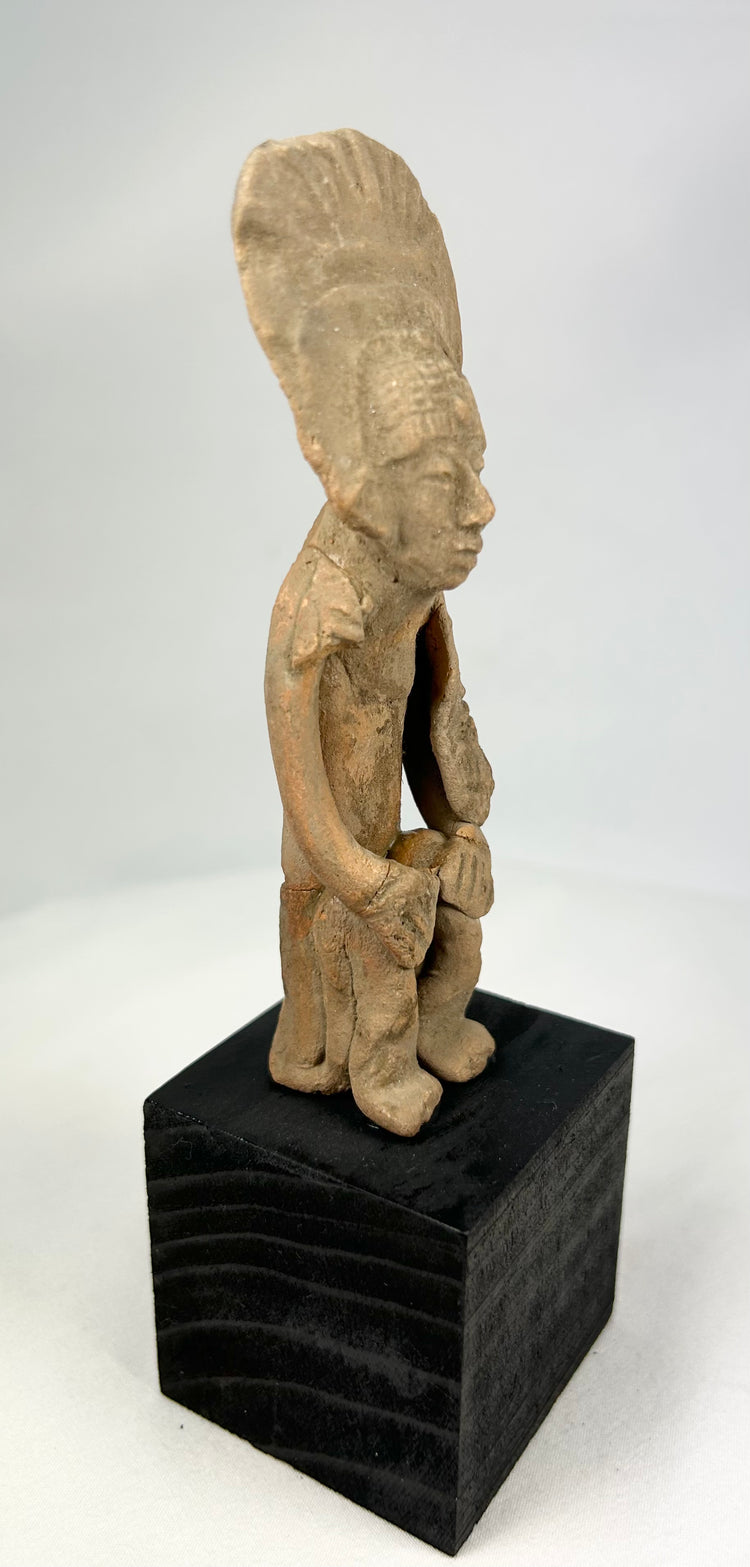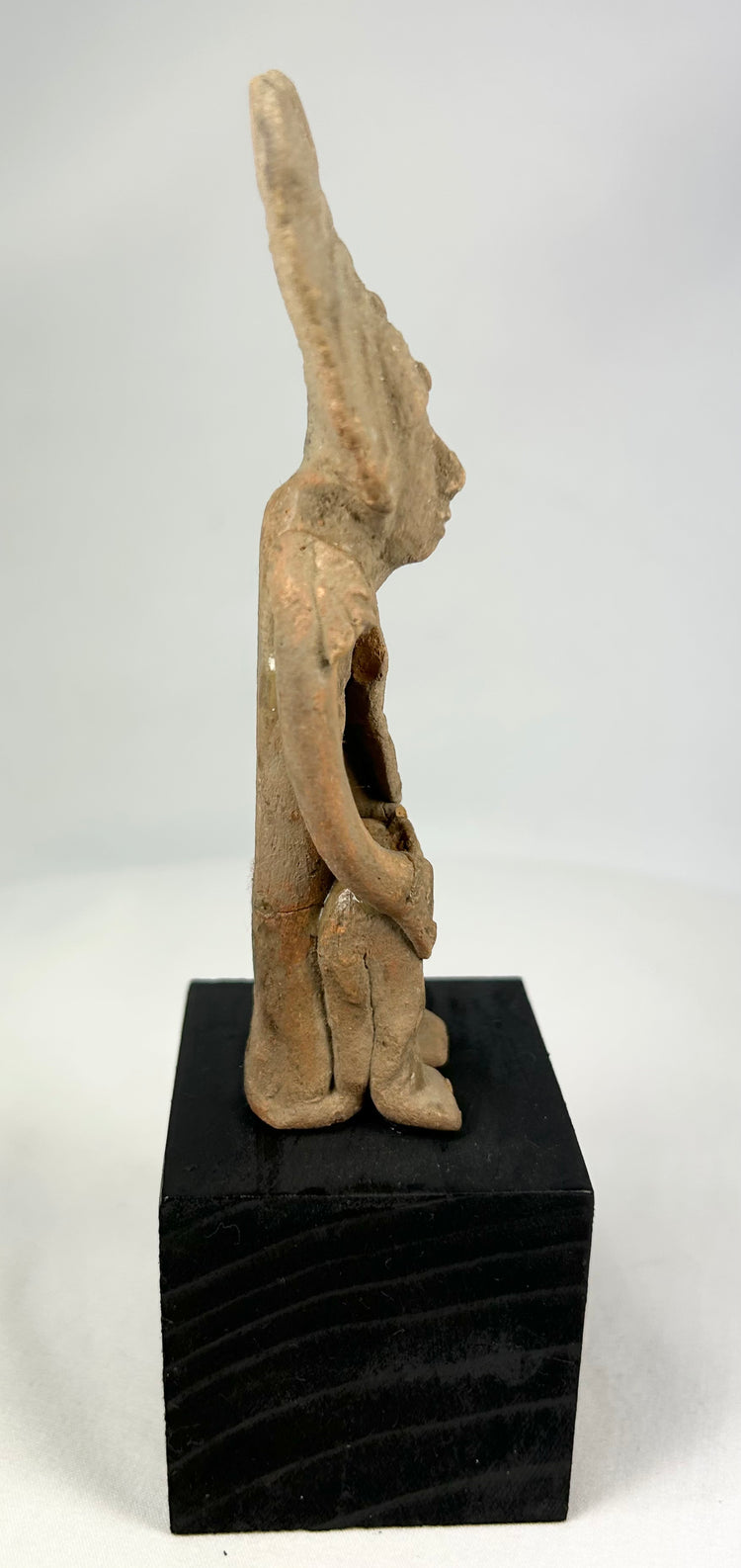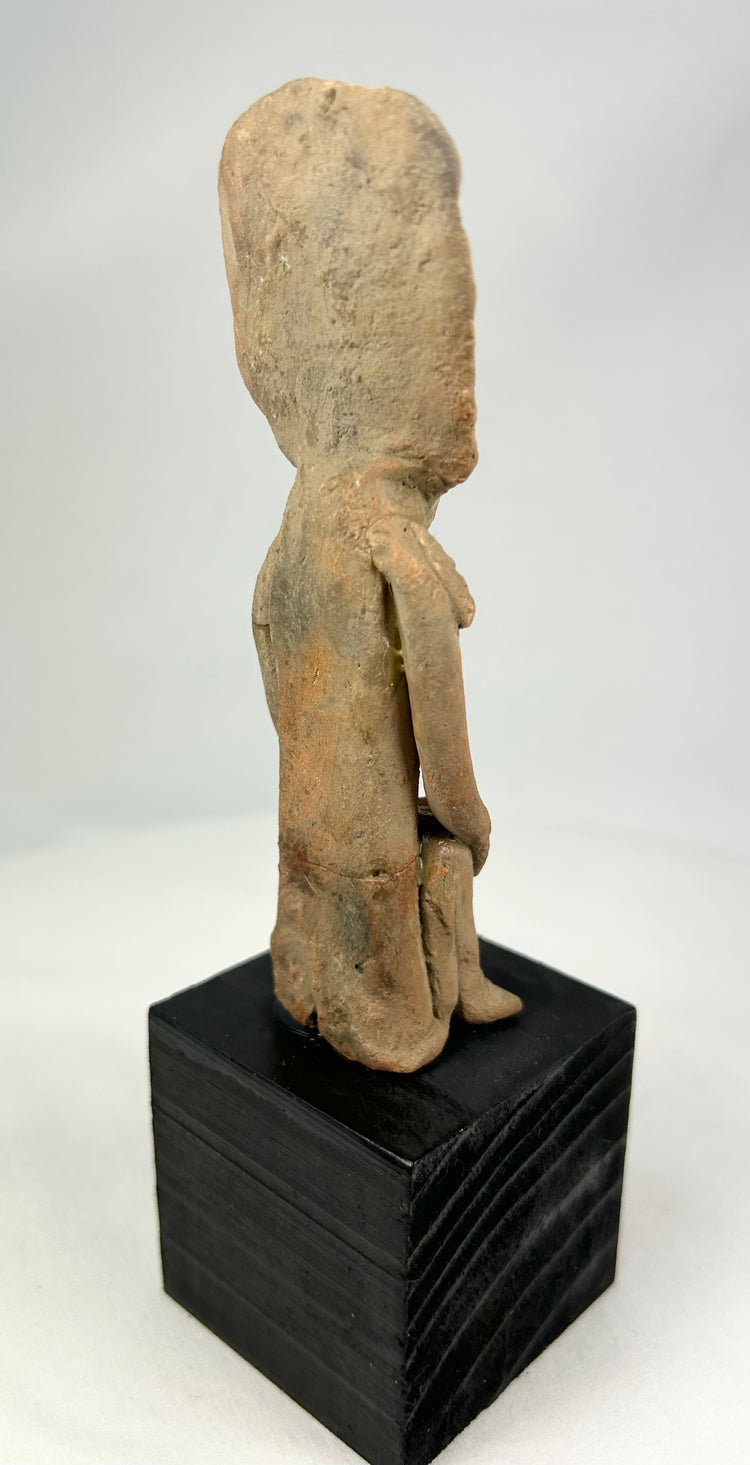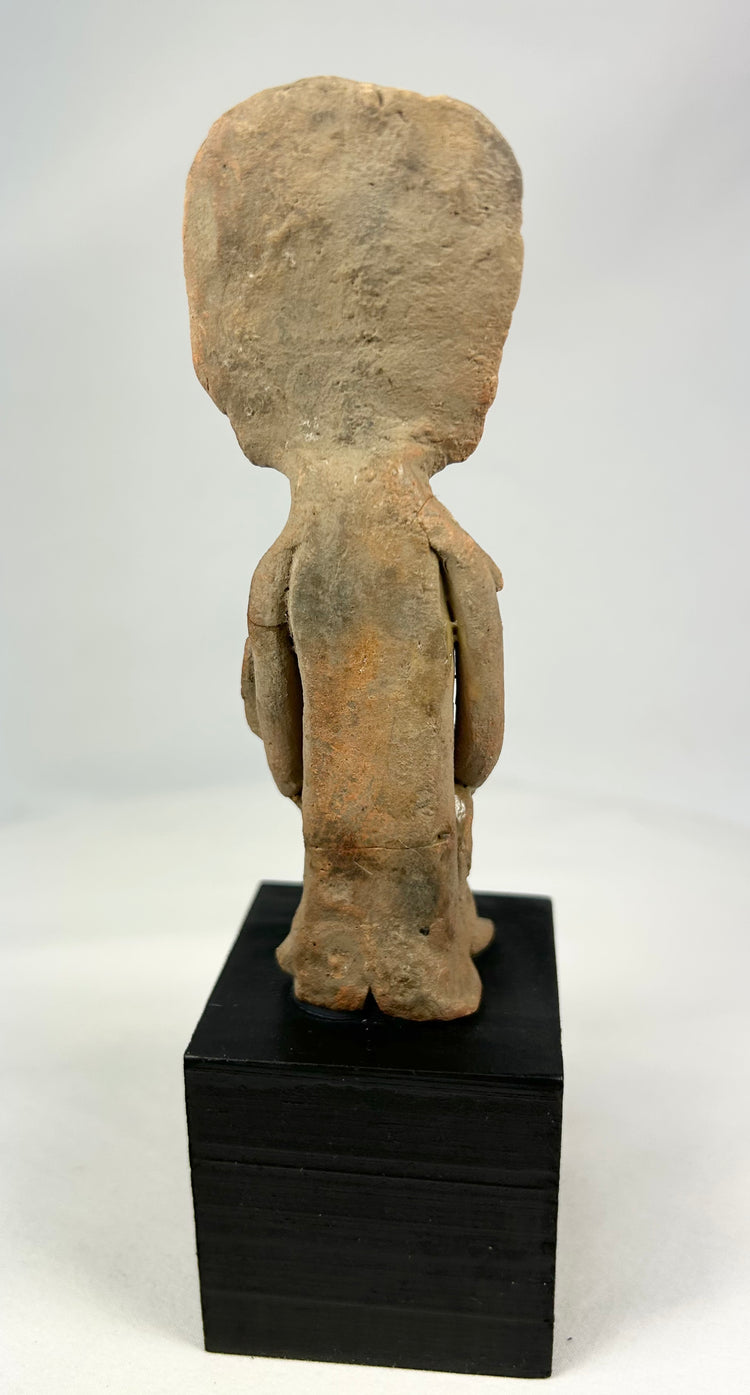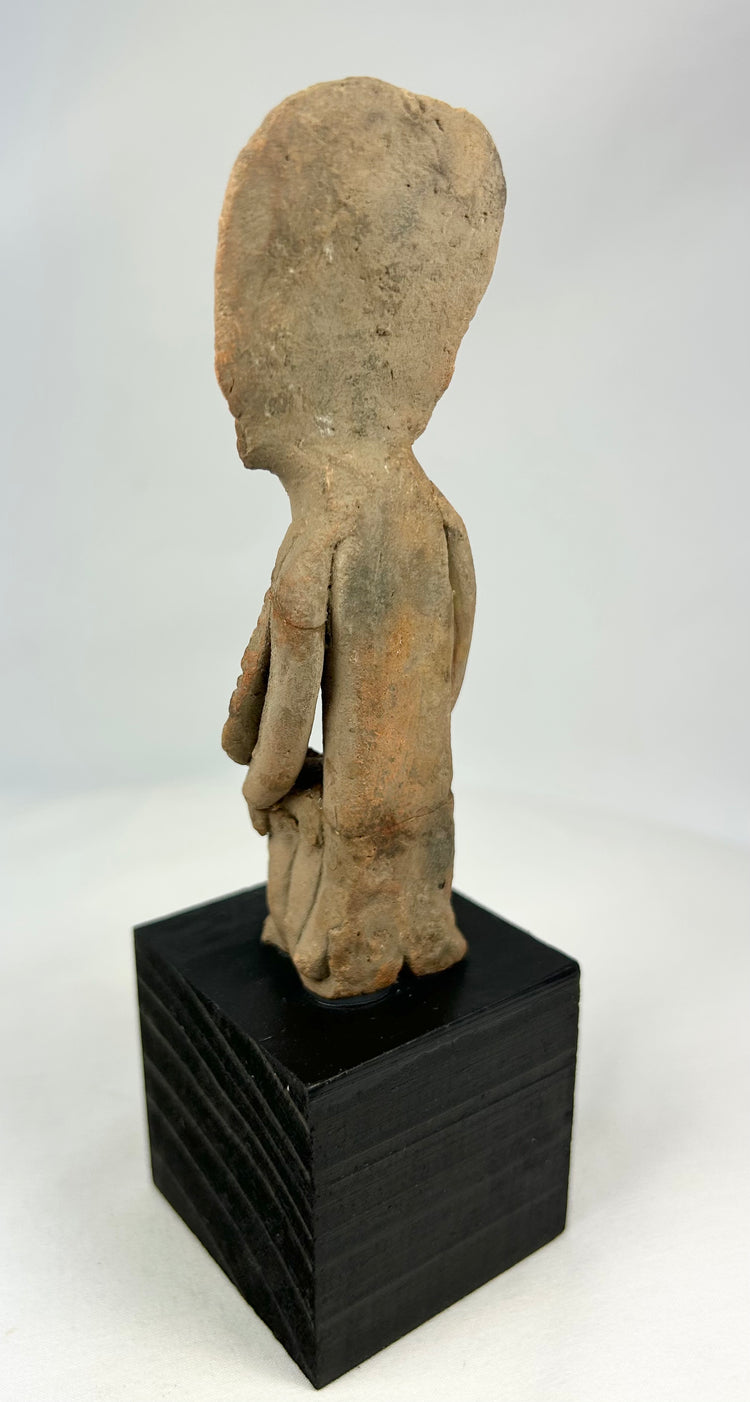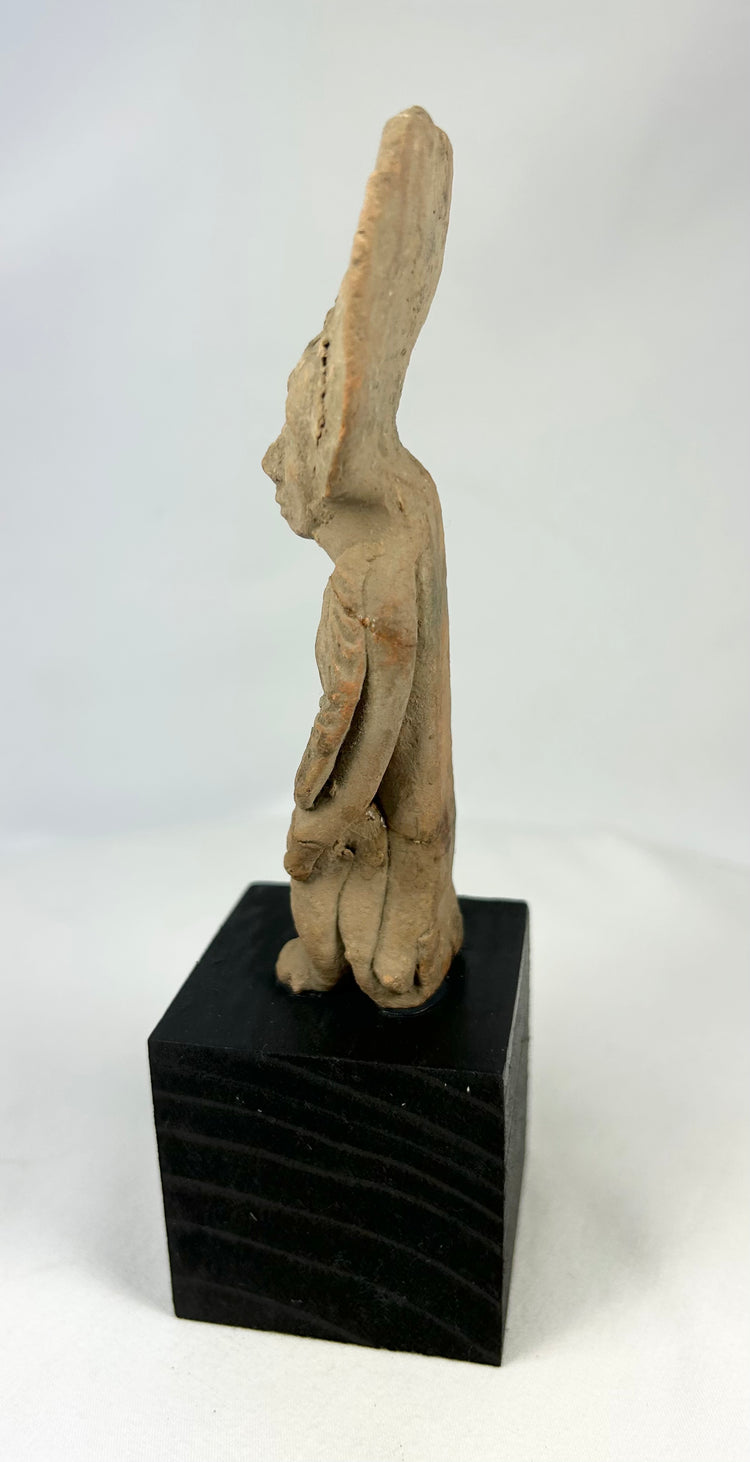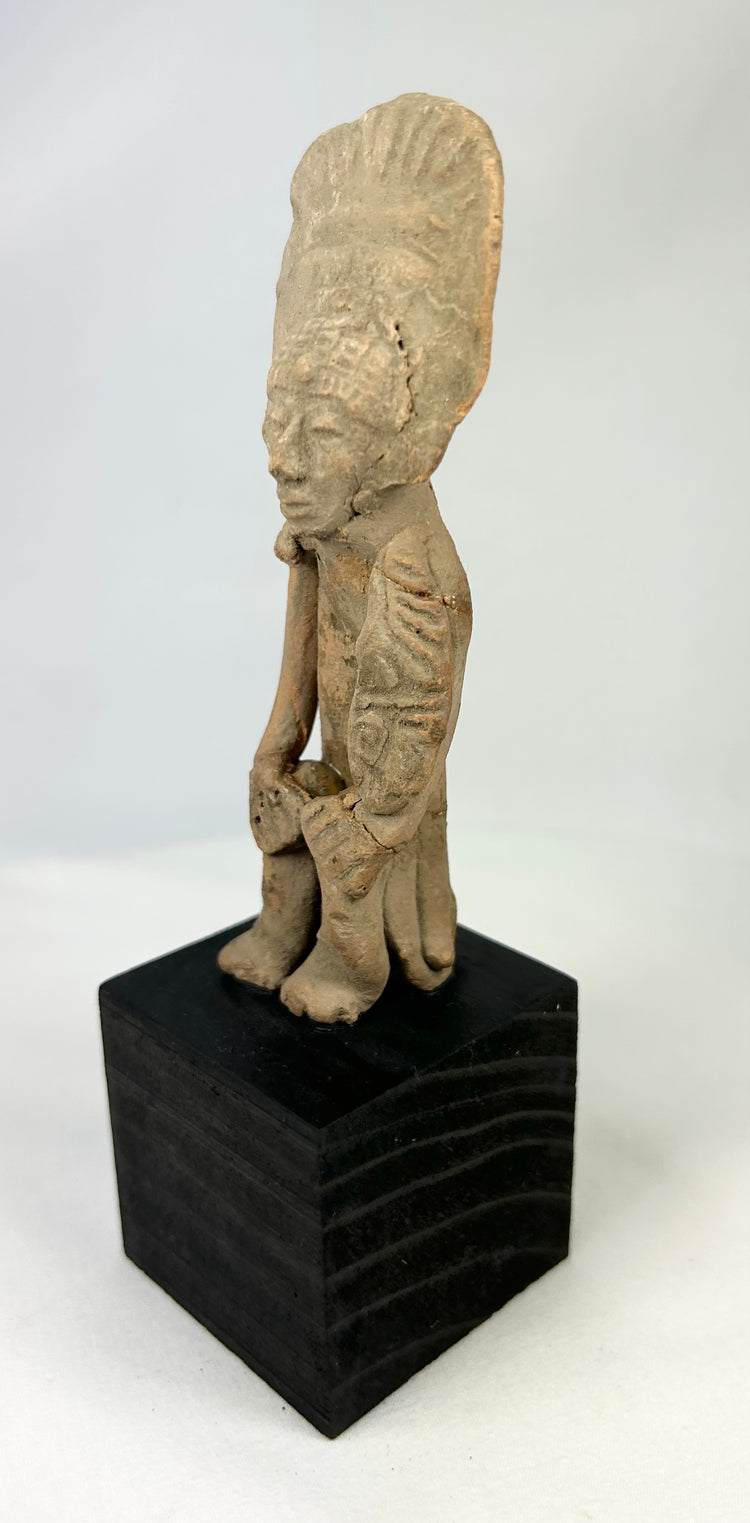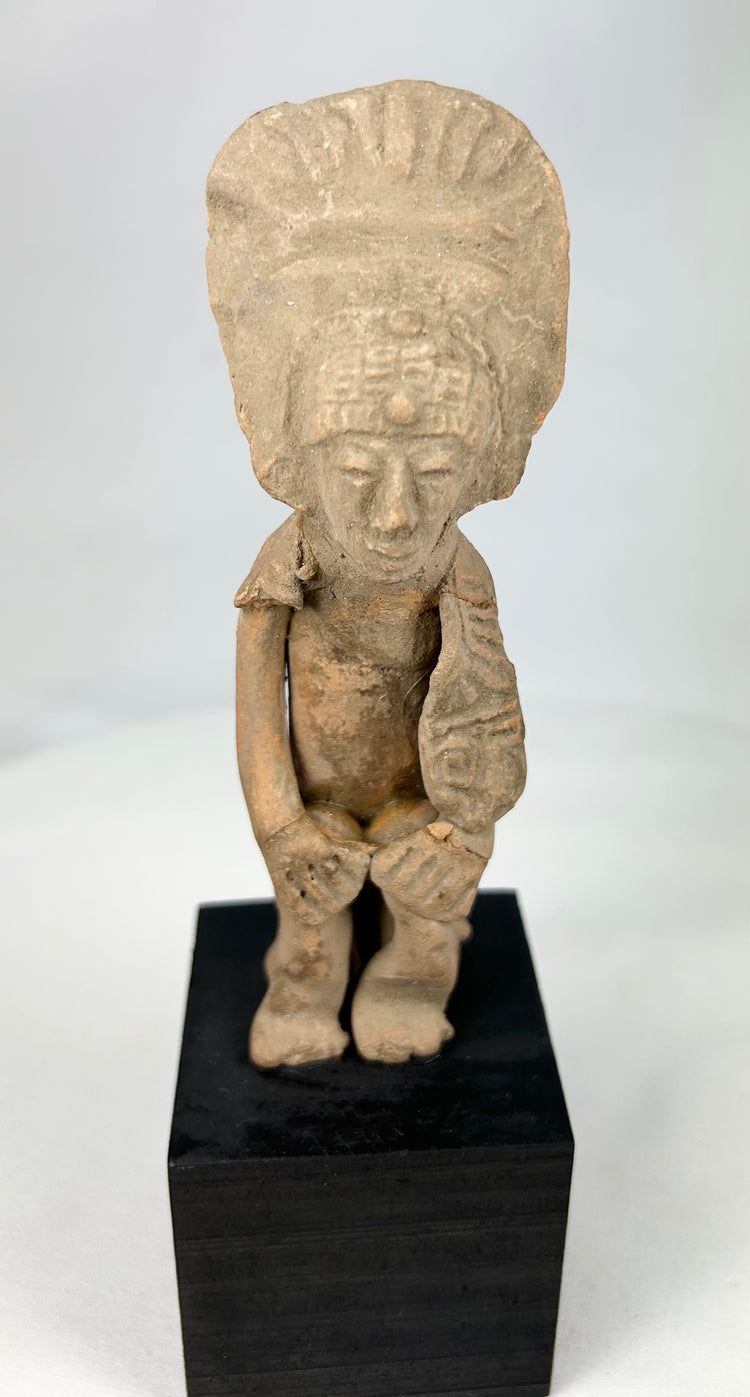Explore the historic significance of Pre-Columbian figurines from Mexico and their role in ritual, daily life, and beliefs about ancestry, fertility, and the sacred world: Pre-Columbian Figurines from Mexico-The Australian Museum
Pre-Columbian West Mexican Terracotta Standing Figure with Headdress | Nayarit/Jalisco | 300 BCE–500 CE
Description
More
Less
More
Less
Historical Context & Origin
Region: West Mexico (likely Nayarit or Jalisco)
Material: Hand-modeled terracotta with mineral accretions
Period: Pre-Columbian, circa 300 BCE – 500 CE
Description
A finely crafted Pre-Columbian terracotta standing figure from West Mexico, notable for its tall radiating headdress and abstract geometric features. The figure stands with slightly bent legs, hands pressed against the torso, and a solemn expression defined by almond-shaped eyes, a broad triangular nose, and an incised mouth. The monumental headdress fans outward in stylized ridges, emphasizing ritual or social status, suggesting the figure may represent a leader, warrior, or ancestral guardian.
The surface retains mineral deposits and encrustations from long burial, consistent with shaft tomb discoveries. The figure is mounted on a modern black base for stability and display.
Features
- Pre-Columbian terracotta figure with tall radiating headdress
- Hands held at torso with stylized abstract body form
- Surface with mineral accretions from age and burial
- Strong typological parallels to Nayarit/Jalisco shaft tomb culture
- Mounted on a modern display stand
Cultural Significance
Figures like this were interred in shaft tombs throughout West Mexico, often in pairs or groups, serving as guardians, ancestors, or ritual participants for the deceased. The striking headdresses and geometric stylization convey lineage, ritual authority, and spiritual protection, making them some of the most emblematic and compelling examples of Pre-Columbian West Mexican art.
Condition
Age-consistent wear and surface deposits; minor chips and erosion typical of shaft tomb terracottas. Overall intact and stable.
Dimensions (approximate)
Height: 6.5 in
Width: 2 in
Depth: 2 in
Age
Pre-Columbian, circa 300 BCE – 500 CE
Learn More
Explore our curated collection of museum-quality Pre-Columbian relics: Ancient Pre-Columbian Artifacts – Relic And Rarity
Description
Historical Context & Origin
Region: West Mexico (likely Nayarit or Jalisco)
Material: Hand-modeled terracotta with mineral accretions
Period: Pre-Columbian, circa 300 BCE – 500 CE
Description
A finely crafted Pre-Columbian terracotta standing figure from West Mexico, notable for its tall radiating headdress and abstract geometric features. The figure stands with slightly bent legs, hands pressed against the torso, and a solemn expression defined by almond-shaped eyes, a broad triangular nose, and an incised mouth. The monumental headdress fans outward in stylized ridges, emphasizing ritual or social status, suggesting the figure may represent a leader, warrior, or ancestral guardian.
The surface retains mineral deposits and encrustations from long burial, consistent with shaft tomb discoveries. The figure is mounted on a modern black base for stability and display.
Features
- Pre-Columbian terracotta figure with tall radiating headdress
- Hands held at torso with stylized abstract body form
- Surface with mineral accretions from age and burial
- Strong typological parallels to Nayarit/Jalisco shaft tomb culture
- Mounted on a modern display stand
Cultural Significance
Figures like this were interred in shaft tombs throughout West Mexico, often in pairs or groups, serving as guardians, ancestors, or ritual participants for the deceased. The striking headdresses and geometric stylization convey lineage, ritual authority, and spiritual protection, making them some of the most emblematic and compelling examples of Pre-Columbian West Mexican art.
Condition
Age-consistent wear and surface deposits; minor chips and erosion typical of shaft tomb terracottas. Overall intact and stable.
Dimensions (approximate)
Height: 6.5 in
Width: 2 in
Depth: 2 in
Age
Pre-Columbian, circa 300 BCE – 500 CE
Learn More
Explore our curated collection of museum-quality Pre-Columbian relics: Ancient Pre-Columbian Artifacts – Relic And Rarity
You May Also Like




























